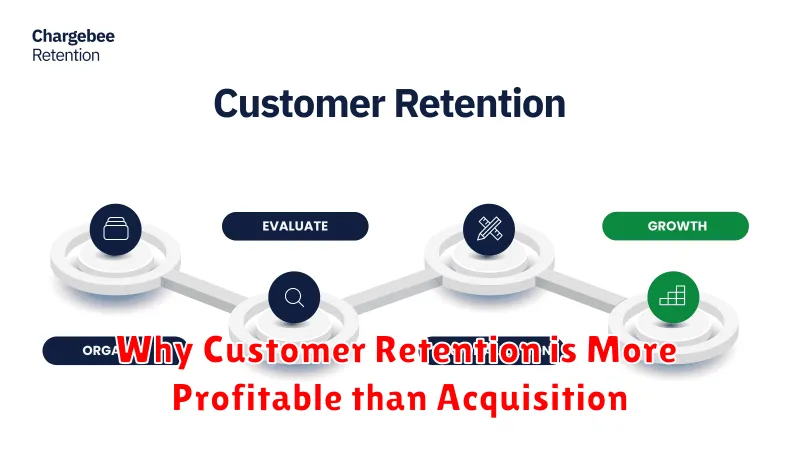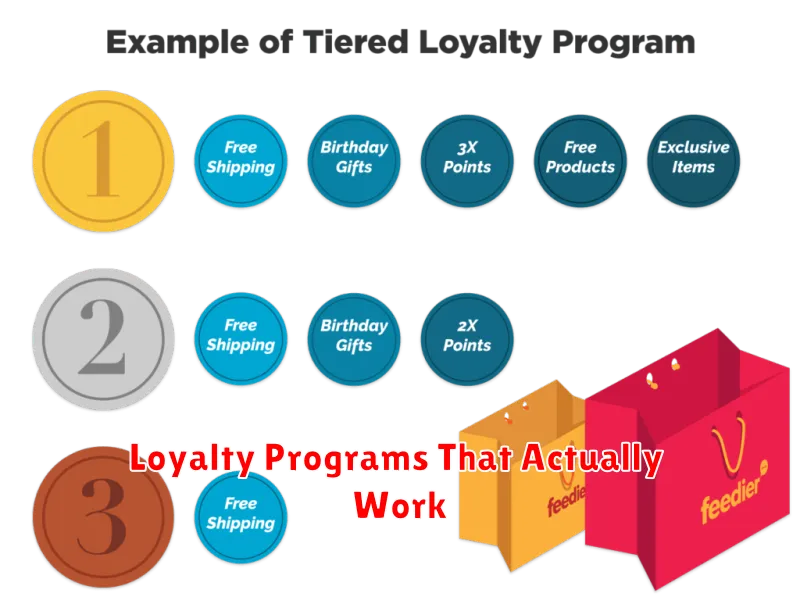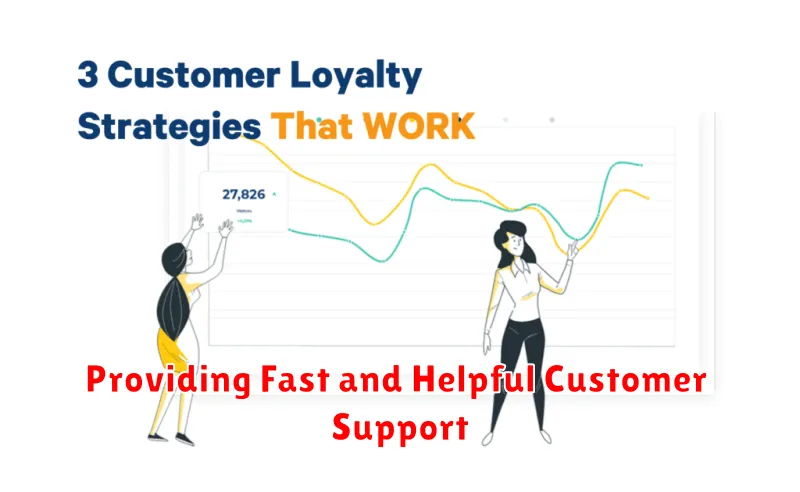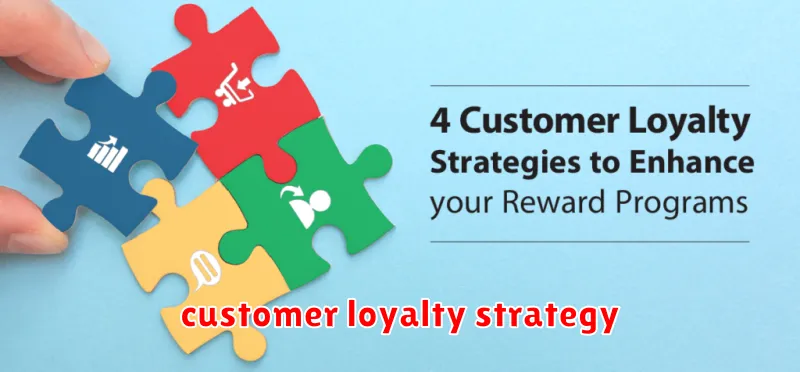Building customer loyalty is crucial for the success of any online business. In today’s competitive digital landscape, attracting new customers is only half the battle; retaining existing ones is where true profitability and growth lie. This article will explore practical strategies to cultivate strong customer relationships, fostering brand advocacy and ultimately driving repeat business and increased revenue for your e-commerce venture. Learn how to implement effective techniques to build a loyal customer base and achieve lasting online business success.
Why Customer Retention is More Profitable than Acquisition

Acquiring new customers is expensive, often involving significant marketing and advertising costs. Customer acquisition cost (CAC) can be substantial, requiring considerable investment to reach potential clients and convert them into paying customers.
Conversely, retaining existing customers is significantly more profitable. Returning customers are already familiar with your brand and products, reducing the need for extensive marketing efforts. They are also more likely to make repeat purchases and spend more over time, leading to increased lifetime customer value (LTV).
Studies consistently show that increasing customer retention rates by even a small percentage can significantly boost profitability. This is because the cost of serving an existing customer is considerably lower than acquiring a new one. Focusing on customer retention strategies, therefore, offers a higher return on investment (ROI) compared to solely concentrating on acquiring new customers.
In short, nurturing existing relationships and building customer loyalty is a far more efficient and profitable path to business growth than continuously chasing new customers. The long-term value of a loyal customer far outweighs the short-term gains of a single purchase from a new customer.
Creating a Memorable Post-Purchase Experience
A positive post-purchase experience is crucial for building customer loyalty. It’s the opportunity to solidify your brand’s reputation and encourage repeat business.
Efficient order processing and shipping are fundamental. Provide clear tracking information and realistic delivery estimates. Consider offering multiple shipping options to cater to varying customer needs.
Exceptional customer service is paramount. Make it easy for customers to contact you with questions or concerns. Respond promptly and empathetically to resolve any issues.
Thoughtful follow-up can significantly impact customer loyalty. Send a thank-you email, offer personalized recommendations, or solicit feedback to demonstrate your appreciation and commitment to improvement.
Loyalty programs and rewards incentivize repeat purchases. Offer exclusive discounts, early access to new products, or birthday gifts to show your valued customers that you appreciate their business.
By focusing on these aspects of the post-purchase journey, you can create a memorable and positive experience that fosters customer loyalty and drives long-term success for your online business.
Loyalty Programs That Actually Work

Effective loyalty programs reward consistent customer engagement, not just spending. They focus on building a relationship, not simply accumulating points.
Tiered systems offering increasing benefits at higher levels are highly effective. This creates aspirational goals and encourages repeat purchases. Exclusive perks, such as early access to sales or special product releases, are powerful motivators.
Personalized rewards, tailored to individual customer preferences and purchase history, enhance the experience and demonstrate genuine appreciation. Gamification, incorporating points, badges, and leaderboards, adds an element of fun and competition.
Transparency and simplicity are key. Customers need to easily understand how the program works and how they can earn and redeem rewards. Clear communication about program updates and benefits is crucial.
Finally, successful loyalty programs aren’t just about rewards; they’re about creating a community. Engaging customers through social media, email marketing, and exclusive events fosters a sense of belonging and strengthens brand loyalty.
Using Email and SMS to Stay Connected
Maintaining consistent communication is crucial for building customer loyalty in the competitive online marketplace. Email and SMS marketing offer powerful tools to achieve this.
Email marketing allows for detailed communication, such as newsletters, promotional offers, and personalized messages. It’s ideal for sharing in-depth information and building relationships over time. Segmentation allows for targeted messaging to specific customer groups, enhancing engagement and relevance.
SMS marketing, on the other hand, excels at delivering immediate, concise messages. This makes it perfect for time-sensitive promotions, order updates, appointment reminders, and quick announcements. Its high open rates ensure your message reaches the customer quickly.
By strategically combining both email and SMS, you can create a robust communication strategy. For example, use email for detailed product information and SMS for immediate shipping confirmations. This multi-channel approach strengthens customer relationships and reinforces brand loyalty. Remember to always respect customer preferences and offer clear opt-out options.
Offering Personalized Recommendations
Offering personalized recommendations is a powerful tool for building customer loyalty in an online business. By leveraging data on past purchases, browsing history, and expressed preferences, you can offer products and services tailored to individual customer needs. This demonstrates that you understand and value them, fostering a stronger relationship.
Effective personalization goes beyond simply suggesting “Customers who bought this also bought…” Consider using sophisticated algorithms to analyze customer data and create more nuanced recommendations. This could involve suggesting complementary items, anticipating future needs based on past behavior, or offering exclusive deals based on individual preferences.
Remember that transparency is key. Customers should understand how their data is being used to generate recommendations. Clearly communicate your personalization efforts, and provide options for users to control their data and preferences. This builds trust and strengthens the customer relationship.
Implementing a robust recommendation engine requires careful planning and integration with your existing systems. However, the investment is worthwhile. By demonstrating a genuine understanding of each customer’s individual needs, you significantly increase the likelihood of repeat business and foster lasting loyalty.
Providing Fast and Helpful Customer Support

Exceptional customer support is paramount to building loyalty in the competitive online marketplace. Responding quickly and efficiently to customer inquiries demonstrates a commitment to their satisfaction.
Speed is crucial. Aim to respond to queries within a reasonable timeframe, ideally within minutes or hours, depending on the communication channel. A delayed response can lead to frustration and lost business.
Helpfulness is equally important. Equip your support team with the knowledge and resources to effectively address customer concerns. Empower them to resolve issues proactively and offer solutions that exceed expectations. Providing multiple support channels (email, live chat, phone) allows customers to choose their preferred method of communication.
Proactive communication can also prevent issues. Sending order updates, proactive troubleshooting tips, and follow-up messages show you care about the customer experience throughout their journey. Regularly solicit feedback to identify areas for improvement in your support process.
By prioritizing fast and helpful customer support, you build trust and foster strong, long-lasting relationships with your online customers, ultimately driving loyalty and repeat business.
Collecting and Using Feedback Effectively
Collecting customer feedback is crucial for building loyalty in an online business. It provides invaluable insights into customer satisfaction, identifies areas for improvement, and demonstrates that you value their opinions.
Effective methods for gathering feedback include post-purchase surveys, in-app feedback forms, social media monitoring, and email questionnaires. Keep surveys concise and focused on specific aspects of the customer experience. Offer incentives for participation to encourage response rates.
Analyzing feedback requires careful consideration. Categorize responses, identify recurring themes, and prioritize issues based on their impact on customer satisfaction. Use this information to improve products, services, and customer support processes.
Acting on feedback is paramount. Publicly acknowledge received feedback and demonstrate how you’re addressing concerns. Transparency builds trust and fosters loyalty. Regularly communicate updates to customers, showcasing your commitment to continuous improvement based on their input.
By actively soliciting and utilizing customer feedback, you create a cycle of improvement that strengthens relationships and enhances customer loyalty. Remember, demonstrating that you value customer opinions is key to fostering long-term relationships.
Rewarding Your Most Valuable Customers
Rewarding your most valuable customers is crucial for building lasting loyalty. These customers are your biggest advocates and contribute significantly to your revenue. A well-structured loyalty program shows your appreciation and encourages repeat business.
Consider implementing a tiered rewards system. This allows you to offer progressively better benefits to customers based on their spending or engagement. Examples include exclusive discounts, early access to new products, personalized gifts, or invitations to special events.
Personalization is key. Generic rewards rarely resonate. Tailor your rewards to individual customer preferences based on their past purchases and browsing history. A thoughtful, personalized gift is far more impactful than a standard discount.
Effective communication is vital. Keep your customers informed about their rewards progress and upcoming opportunities. Use email marketing, in-app notifications, or personalized messages to maintain engagement and excitement.
Finally, monitor and adapt your rewards program. Track customer engagement and feedback to identify what’s working and what needs improvement. A dynamic program that evolves with your customers’ needs is far more effective than a static one.

